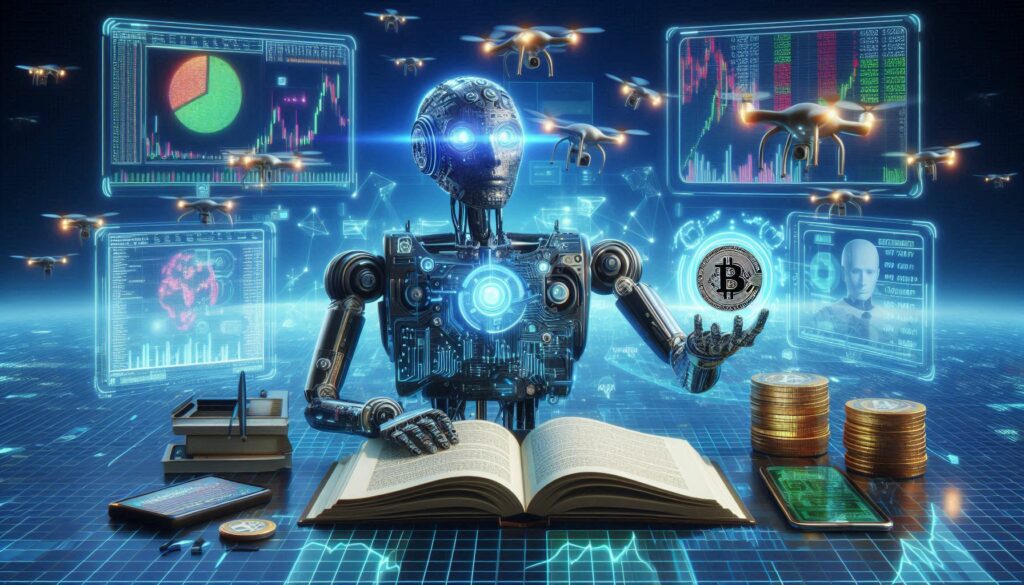
The convergence of artificial intelligence (AI) and cryptocurrencies is reshaping the financial landscape.As AI continues to advance at an unprecedented pace, its integration with blockchain technology is unlocking new possibilities and driving innovation. This article delves into the burgeoning relationship between AI and cryptocurrencies, exploring its potential impact on the industry.
Enhancing Crypto Trading with AI
Predictive Analytics: AI-powered algorithms can analyze vast amounts of market data, including price history, trading volume, social sentiment, and macroeconomic indicators, to identify potential trends and patterns. This information can be used to make more informed trading decisions.
High-Frequency Trading (HFT): AI-driven HFT systems can execute trades at lightning speeds, taking advantage of microsecond-level price fluctuations. These systems rely on complex algorithms to analyze market data and make split-second decisions.
Risk Management: AI can help assess market risks by identifying potential vulnerabilities and developing strategies to mitigate them. This includes fraud detection, market manipulation prevention, and portfolio optimization.
AI-Driven Crypto Projects
Decentralized Autonomous Organizations (DAOs): AI can enhance the decision-making process of DAOs by analyzing proposals, voting patterns, and community sentiment. This can lead to more efficient and transparent governance.
Decentralized Finance (DeFi): AI can optimize lending and borrowing platforms by assessing creditworthiness, predicting interest rates, and automating loan processes. Additionally, AI can be used to develop new DeFi products and services.
Non-Fungible Tokens (NFTs): AI can generate unique and valuable NFT content, such as art, music, and virtual real estate. It can also be used to authenticate NFTs and prevent counterfeiting.
Challenges and Considerations
While the integration of AI and cryptocurrencies holds immense promise, it also presents challenges. These include:
Data Privacy: Protecting sensitive user data is crucial, as AI models rely on large datasets.
Algorithmic Bias: AI algorithms must be carefully designed to avoid biases that could lead to unfair outcomes.
Regulatory Framework: The evolving regulatory landscape for both AI and cryptocurrencies requires careful navigation.
Conclusion
The fusion of AI and cryptocurrencies is still in its early stages, but its potential is undeniable. As technology continues to advance, we can expect to see even more innovative applications emerge. By addressing the challenges and harnessing the opportunities, the AI-crypto ecosystem can drive significant growth and transformation in the financial industry.
Koinat, a prominent player in the crypto space, is at the forefront of leveraging AI to enhance its platform and services. By incorporating advanced machine learning algorithms, Koinat aims to provide users with sophisticated trading tools, personalized investment recommendations, and robust security measures. Through AI-driven risk assessment, Koinat strives to protect its users from fraudulent activities and market volatility.
This information is not legal advice. Do your own research before making any decisions. Only invest what you can afford to lose and seek independent financial advice if needed. Understand the risks involved before purchasing any cryptoasset
